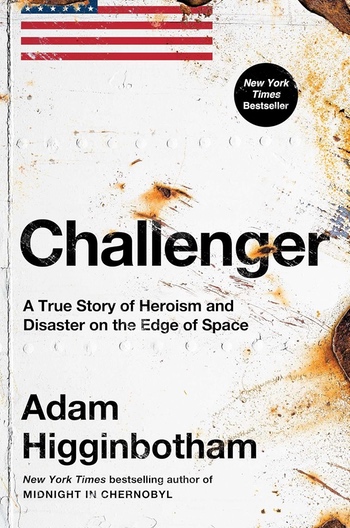Review: Challengerby Jeff Foust
|
| Higginbotham tells the story expertly, weaving together multiple storylines—of the astronauts and their families, of those within NASA, and those at Thiokol—to show how an accident that seemed unthinkable to the public just before January 28, 1986, was effectively preordained. |
That’s the perspective offered by Challenger: A True Story of Heroism and Disaster on the Edge of Space by Adam Higginbotham, best known for Midnight in Chernobyl, his book on the Chernobyl nuclear accident that took place just months after the Challenger accident. He, he takes a broad view of the forces that, in the benefit of hindsight, made the accident inevitable.
That wide scope of the book takes the reader back to the early Space Age and interest in spaceplanes that offered the promise of airplane-like access to space. That promise led to the shuttle program as NASA tried to find its post-Apollo footing in an era of reduced budgets. Those limited resources, though, led to design compromises like the use of solid rocket boosters that would figure into the accident.
But, as he described in the book, it was not just technological issues that led to Challenger. There were flawed decision-making processes and even an unwillingness to listen to concerns, like those posed by some at Thiokol about how the O-rings in those solid rocket boosters would lose their effectiveness at cold temperatures. There were close calls with those O-rings and other systems on the shuttle before Challenger, yet NASA marched ahead, trying to ramp up the flight rate and demonstrate what the shuttle had been designed to do.
The book itself has few new insights or revelations about the accident and its aftermath. For many readers, the outlines of the story and its details will be old hat. However, Higginbotham tells the story expertly, weaving together multiple storylines—of the astronauts and their families, of those within NASA, and those at Thiokol—to show how an accident that seemed unthinkable to the public just before January 28, 1986, was effectively preordained.
The accident was supposed to be a “never again” moment for a chastened NASA, yet it happened again just 17 years later with Columbia. This time, it seems, the lessons learned at a terrible price have been retained with the shuttle safely flying the remainder of its missions along with continued operations of the International Space Station and, more recently, commercial vehicles carrying NASA astronauts to and from the station. For future generations wondering how Challenger happened, Higginbotham’s book will be an excellent starting point about the technical and institutional forces that doomed an orbiter and its crew.
Note: we are now moderating comments. There will be a delay in posting comments and no guarantee that all submitted comments will be posted.
